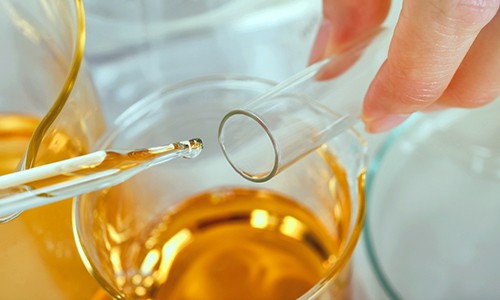It is not unusual, especially for kids, to doodle on the skin to express creativity. It may seem like a harmless way to pass the time. But in reality, can drawing on yourself with pen hurt you? What happens if you do it constantly?
In short, excessively drawing on yourself with a pen may harm you. There are pens that may trigger skin irritation, allergic reaction, and other skin issues because of their hazardous chemical content.
However, although drawing on your skin does not pose a risk of poisoning, too much is never good. It is best to be extra cautious of what you expose your skin to, particularly pen ink, thereby preventing skin-related issues.
Let us further discuss the answer to that question in this article.
Table of Contents
Potential Effects of the Chemicals Present in Pen Ink
Do the chemicals make pen ink bad for your skin? Is it bad to write on your skin with pen ink?
Some of these chemicals can also be detrimental to the skin, but most of them are more dangerous when ingested and constantly inhaled.
In general, the dyes or pigments in pen ink are minimally toxic, but they may become dangerous when they are exposed to certain conditions or the user mishandles the pens.
- If you are drawing on skin with pen while you have wounds or skin lesions, you might put yourself at risk of infections and bacterial growth.
- Although it is unlikely that you will get ink poisoning from a pen on your skin, the risk increases when you’re sharing pens with somebody else, much more so if they’re using the pen on their skin as well, since the pen ink might get contaminated.
- Pen ink may contain metals like titanium or copper, which may cause allergic reactions, especially on sensitive skin. But don’t worry, you will not die from drawing on yourself with a pen. It takes an exposure to large amounts of ink for it to be considered extremely harmful.
- While ink may generally contain low toxicity, ingesting it may cause adverse effects. So, just in case your child accidentally ingests ink, it is recommended to provide them with a few sips of clean drinking water.
It is important to observe your kid and watch out for symptoms of ink poisoning such as vomiting that may require treatment.
- Aside from that, inhaling several formulations of pen ink may potentially induce bad effects. For instance, if the pen uses black ink that is carbon-based, prolonged inhalation exposure may lead to serious lung and heart damage.
Risks When Drawing on Yourself With a Pen
1. Short-Term Effects
- Skin irritation, including redness, itching, and swelling
- Allergic reactions due to chemicals in the pen ink
- Temporary ink stains
- If pen ink is constantly applied to the skin, it’ll be difficult to remove the ink stains
2. Long-Term Effects
- Ink poisoning from ingestion or open wound exposure can cause symptoms such as seizures.
- Increased risk of skin infection from small abrasions created by drawing on the skin with a pen, particularly if the pen has been used by someone else
- Upset stomach and nausea from ingestion of ink=
3. Signs of Ink Poisoning
- Nausea and Vomiting. Ingesting an excessive amount of pen ink can cause nausea and vomiting as the body attempts to expel the poisonous chemicals.
- Allergic Reaction. Some people may have an allergic reaction to pen ink, which manifests as swelling, redness, and a rash.
- Neurological Symptoms. Swallowing excessive amounts of ink from pens has the potential to harm the nervous system, resulting in headaches or dizziness.
- Respiratory Symptoms. In rare cases, inhaling or ingesting pen ink particles or fumes can result in difficulty breathing, coughing, or throat irritation.
Should you experience any allergies, infections, or health issues after drawing on your skin with a pen, consult a doctor immediately.
Chemical Composition of Pen Ink
Before we dive into more detailed information about the risks of pen ink on the skin, let us first discuss the chemical composition of pen ink.
Pen ink is usually made out of four components: dyes or pigments, polymers, liquid solvents, and other additives.
1. Dyes or Pigments
Pen ink colors can either be dye-based or pigment-based. The significant difference lies within their solubility.
Dye-based ink colors are water-soluble or completely dissolve in liquid. Although dyes provide more and stronger color, they tend to bleed or smear since they can soak in paper.
Conversely, pigment-based ink colors are not water-soluble or do not completely dissolve in liquid. This results in very opaque colors that are lightfast, bleed-resistant, and long-lasting.
However, pigment-based ink colors are not as brilliant and consistent as dye-based inks. The color range is also much less extensive than those of dye-based inks.
2. Polymers
The main job of polymers in pen ink is to ward off clotting, thereby regulating ink movement. Mixing the polymers (or ink binders such as polyurethane, modified resins or polyvinyls) with dyes or pigments provides smoother and more consistent ink flows that deliver an effortless writing experience.
3. Liquid Solvents
Besides water, liquid solvents in pen inks may be derived from various compounds such as petrochemicals, alcohol, and other chemicals. These solvents work with other additives to formulate durable and long-lasting ink solutions.
4. Various Additives
Aside from the aforementioned elements, pen ink is formulated with a complex mixture of various additives. Certain additives such as glycerides derived from plants can elevate the ink’s quality to make it glide seamlessly on paper.
Other additives include pH modifiers (such as triethanolamine) to regulate ink’s acidity and thus, ensure the pen lasts long.
Frequently Asked Questions
Alternatives to drawing on oneself with a pen
- Non-Toxic Markers
Opt for markers that are specially labeled non-toxic, such as Crayola markers. These markers are intended to be safe on the skin and do not cause potential harm even when swallowed or inhaled. Drawing on your hand, arm, foot, back, or even your face is feasible with non-toxic markers.
Crayola markers are popular among children for their non-toxic formula and are frequently used in arts and crafts. There are a lot of things to draw on yourself with a pen, and fortunately, you can achieve them with Crayola markers.
- Wax Pencils
Another safe method for drawing on the skin is wax or grease pencils. They are free of harmful substances and have washable pigments. Wax pencils are refillable and provide earth-friendly extended use.
Products such as the Listo Wax Pencil are non-toxic, food-safe, and skin-friendly, making them a suitable choice for drawing on skin.
- Liquid Eyeliners
Liquid eyeliners can also be used as an alternative to a pen for drawing on skin. Natural thickeners, including waxes, natural gums, and clays, are commonly used in liquid eyeliners to help strengthen the formulation while helping it adhere to the skin.
Furthermore, cosmetic liquid eyeliners are generally safe for skin contact and can be used to create detailed designs or lines on the skin.
- Temporary Tattoo
Temporary tattoos are another alternative for drawing on the skin without using standard pens. Temporary tattoos that look like genuine tattoos can be a fun way to play with a variety of designs and styles before committing to permanent body art.
BIC BodyMark Markers are a classic example of cosmetic-quality markers made exclusively for use on the skin. They are skin-safe, since they use FDA-approved colorants and adhere to cosmetic laws. These temporary tattoos normally last 2 days, depending on skin type, body location, and the number of washes.
Can you get skin cancer by drawing on yourself?
Drawing on yourself with a pen likely will not give you cancer or cause skin cancer. Although some inks may contain minimal amounts of solvents and chemicals, the chance of getting cancer is low. Prolonged exposure to UV light is the main culprit for skin cancer.
Are Sharpies toxic on the skin?
Some types of markers from Sharpie including King Size, Magnum, and Touch-Up Sharpie, contain xylene, a chemical solvent used in some pen inks. This chemical compound is toxic and can potentially be harmful to your health when persistently inhaled.
Can Sharpie on skin kill you? It is very unlikely. However, writing on the skin with these markers is not recommended as xylene is a toxic compound. It can be absorbed through the skin or mucous membranes.
Average Sharpie markers without xylene, on the other hand, are non-toxic and safe, but caution should still be exercised.
Conclusion
Can drawing on yourself with pen hurt you? Well, drawing on yourself with a pen is not extremely harmful, but it is still crucial to be aware of the risks associated with pen ink on the skin.
Pen ink contains chemicals that may lead to skin irritation, allergic reactions, and temporary stains. Ink poisoning by ingestion or open wound exposure, an increased chance of skin infection, and potential long-term skin damage are all possible effects.
It is advisable to use your pen correctly to prevent these potential risks to your health.

Art has always been a part of my life; it influences my upbringing and later my career choice. For me, it is always a part of my parenting technique. So for whichever purpose that you come to art, you can start here with us.







